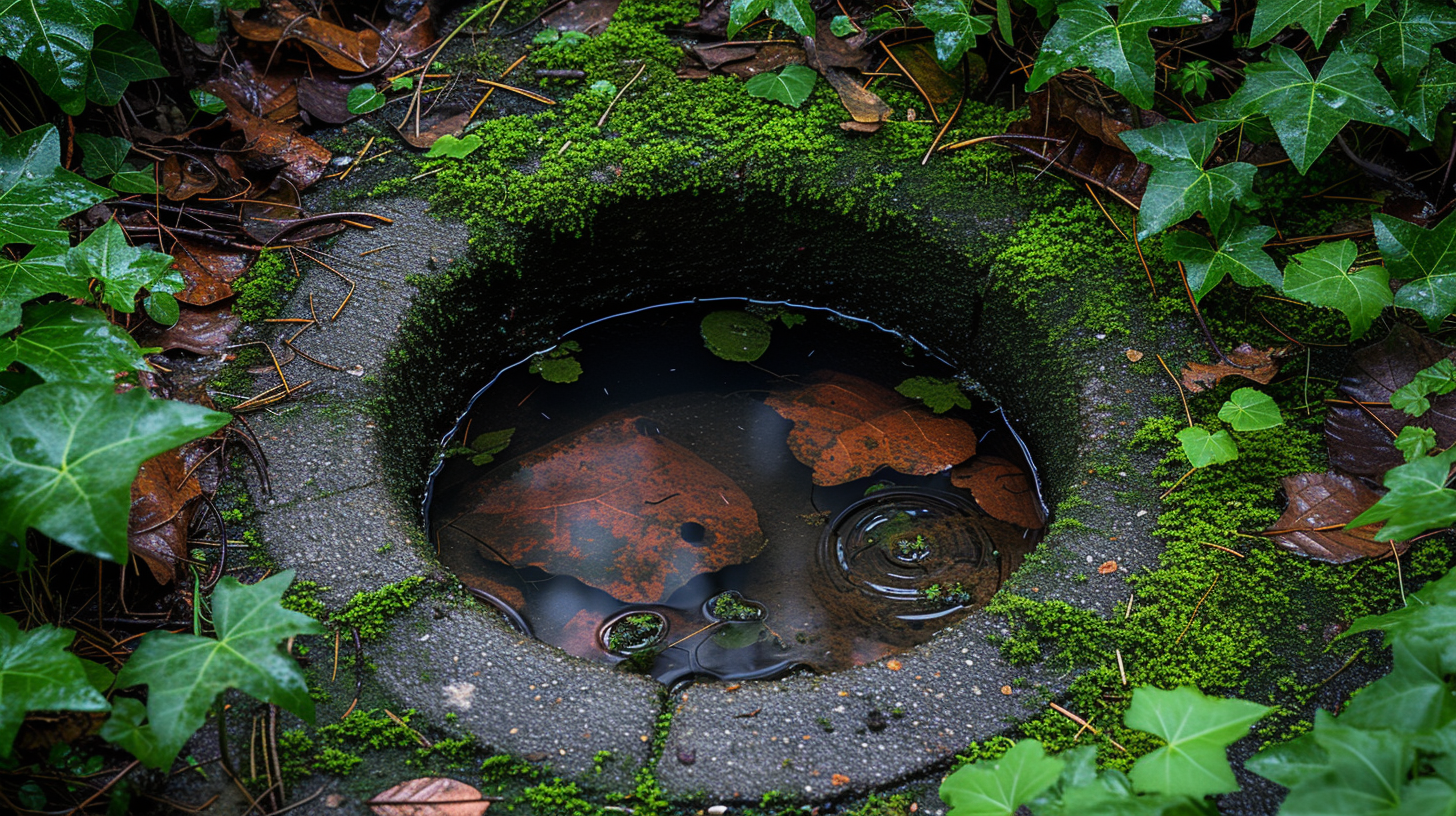Key points
• Pooling Water: If you notice water pooling in the area around the septic tank or in the drain field, this can be a clear sign that the septic tank is full or overloading, leading to potential seepage or backup.
• Slow Drains: Slow-moving drains throughout your home, including sinks, showers, and toilets, can indicate that your septic tank is nearing capacity and needs to be emptied or inspected for blockages.
• Odors: The presence of strong, unpleasant odors around the tank or drain field area can suggest that the septic tank is full, as the odor is a result of waste materials not being properly processed or contained.
Contents
- 1 Key points
- 2 Spotting the Telltale Signs of a Brimming Septic Tank
- 3 Recognizing Signs of Septic Tank Overload
- 4 Navigating Technical Assessments and Measurements
- 5 The Fallout from Ignoring a Brimming Septic System
- 6 Getting Professional Septic Inspection and Upkeep
- 7 Proactive Measures to Ward Off Septic Troubles
- 8 Frequently Asked Questions (FAQ)
The Significance of Periodic Upkeep
Now, we all know that prevention is better than cure, which couldn’t be truer when it comes to septic systems. Scheduled maintenance is imperative to ensure that everything is functioning seamlessly. Neglect could induce a slew of problematic scenarios including unpleasant odors, water contamination, and costly repairs. By keeping up with regular checks and pumping out the system when needed, you’re safeguarding not just your property but also the health of those living there and the environment at large.
Spotting the Telltale Signs of a Brimming Septic Tank

So, what are the red flags hinting at an overflowing septic tank? Let’s sift through some indicators:
Pooling Water: If you notice water gathering around the drain field without recent heavy rains, it’s a likely sign that the tank has hit its limit.
Slow Drains: Ever find your sinks or showers draining at a snail’s pace? Could be more than just a simple blockage – your septic tank might be crying out for a pump-out.
Odors galore: A foul smell coming from drains or the tank area shouldn’t be ignored. It suggests waste isn’t breaking down like it should.
Gurgling Sounds: That gurgling coming from your plumbing system after flushing or using sinks? A little heads-up from your pipes that something’s amiss below ground.
Bear in mind that each situation can reveal different symptoms; however, these common signs often point towards an ominous need for service. Remember to address issues promptly to avoid turning them into major headaches.
We’ve grazed only the tip of the iceberg here—maintaining and monitoring your home’s septic system extends far beyond what meets the eye. Keeping tabs on potential issues aids in catching hiccups before they spiral out of control. So let this serve as a nudge in the direction of attentive homeownership—your senses (and wallet) will thank you later!
Letting you in on the nuts and bolts of how septic tanks work, these nifty systems function by separating solid waste from wastewater, providing a basic level of treatment within your property line. Essentially, solids settle at the bottom while oils float to the top, leaving relatively clear water in the middle to discharge safely. While they might seem complicated, it’s really just about where things go and how they’re processed.
Factors Affecting Septic Tank Filling Rates
You’d be surprised – lots of stuff impacts how quickly your septic tank fills up. From how many folks call your place home to whether you love tossing everything but the kitchen sink down the drain (hint: don’t do that), to what appliances are cleaning what – all these add up faster than you think. And don’t forget Mother Nature! She’ll have her say too with rainfall and groundwater levels dabbling in your septic affairs.
A little heads-up? Even small changes in your daily routine can tip the scales towards a full tank sooner than later – It doesn’t take much! So go easy with water use and care about what goes down those drains!
Recognizing Signs of Septic Tank Overload
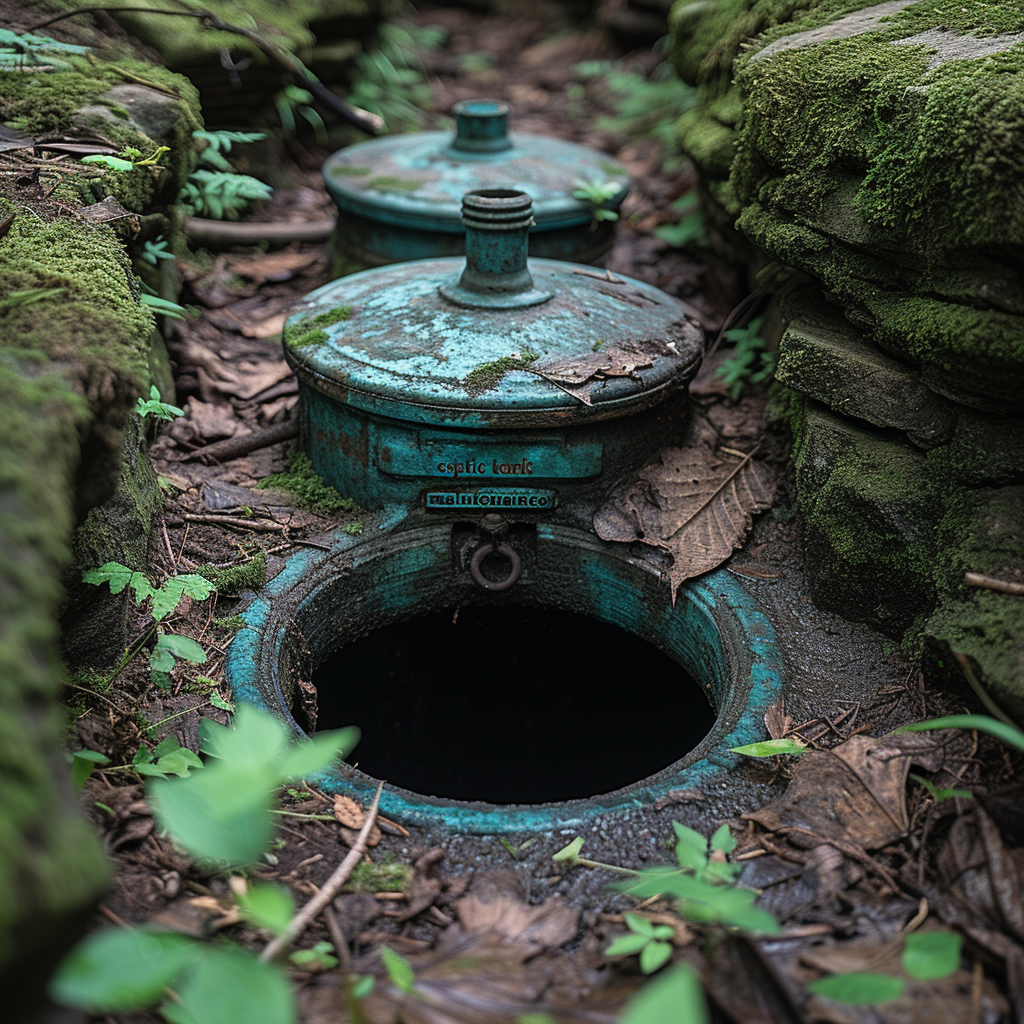
To keep your home safe and sanitary, it’s crucial to recognize the tell-tale signs that your septic tank might be reaching its capacity. A bit of awareness can save you a heap of trouble down the line. Here’s what to keep an eye out for:
Foul Odors
If you’re getting a whiff of something foul around your property, particularly near the septic tank or drain field, Foul odors are a telltale sign that waste isn’t being processed correctly, and that your tank might just be having issues.
Gurgling Noises
Hearing some gurgling noises coming from your pipes? The gurgles usually means air is trapped somewhere it shouldn’t be in your plumbing. This acoustic quirk could signify that your tank’s pleading for help.
Excessive Moisture in the Drain Field Zone
First off, if you spot pools of water accumulating around the drain field, that’s a red flag. This usually means your septic tank’s got more than it can handle, causing an overflow which then makes its way to the surface. It’s not exactly rocket science – too much liquid with nowhere to go ends up pooling right where you don’t want it.
Unexpected Plant Growth
Next up, let’s talk about plants – but not your typical gardening situation. If you notice a sudden spurt of greenery flourishing above your drain field like it’s been hit by miracle-gro, take heed. It often suggests there’s extra fertilization happening below from leaking waste – a little bit gross and quite worrisome.
Soil Dips and Dives
Watch your step – literally! Sinkholes or indentations near your septic system shouldn’t be taken lightly. When the soil starts sinking or caving in, it’s often due to a collapsing tank or eroding structures within the system. And that spells big trouble.
All in all, living with a septic system isn’t quite a walk in the park – you’ve got to stay vigilant and act quickly at the first sign of trouble. So don’t turn a blind eye; if you see any of these indicators, it’s probably time to call in the pros to take care of the problem before it gets really serious.
These sensory hints aren’t to be taken lightly. A little proactiveness goes a long way; so when these signs emerge, it’s prudent to call in a professional who can clear up whether it’s time for a pump-out session or if there’s something else amiss with your septic system. Ignoring them could lead to messy situations nobody wants to deal with. Trust me—you’d rather nip potential septic troubles in the bud than sort out their aftermath.
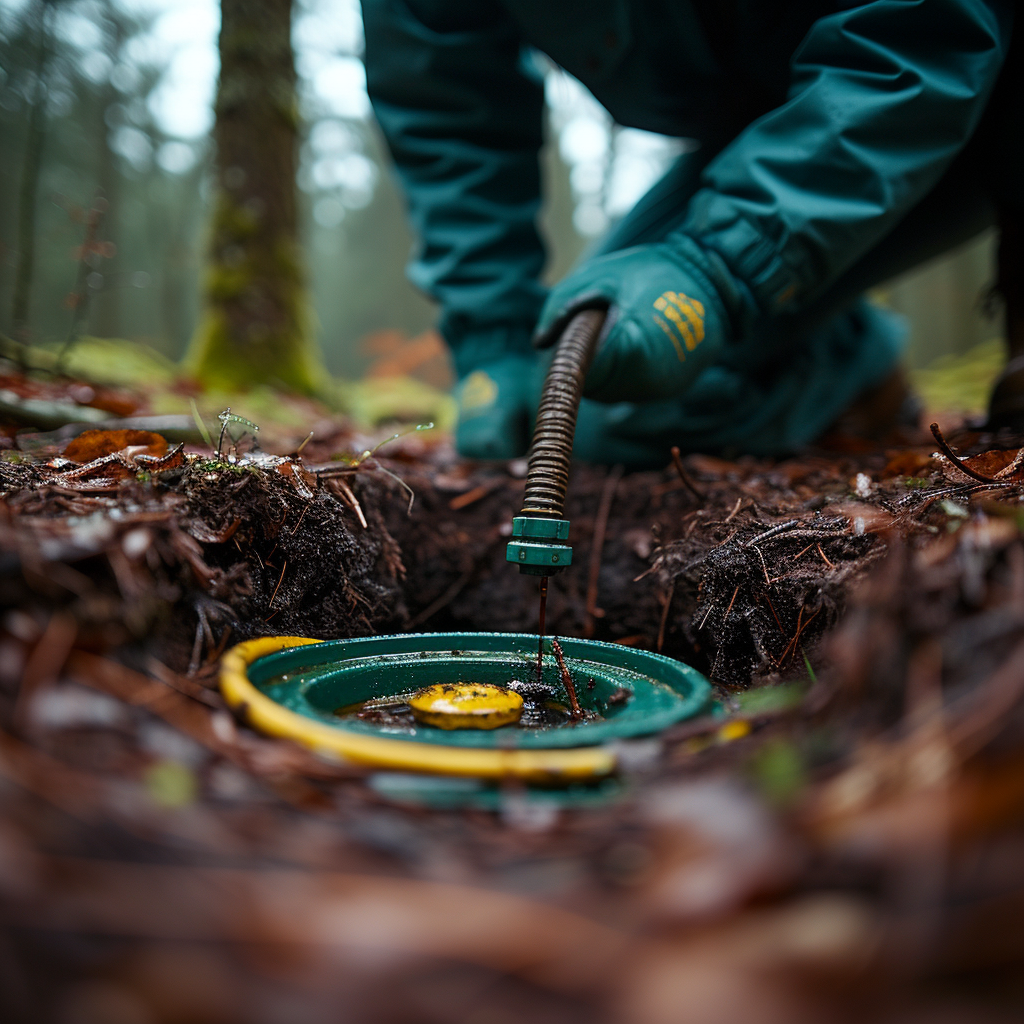
First things first: mark your calendar for regular septic checks – it’s non-negotiable! Experts recommend you shouldn’t let more than 3 years slip by between inspections. An ounce of prevention here can save you a ton of trouble later on.
Delving Into Sludge and Scum Layer Checks
When your tech arrives, they’ll case out the scene by checking how much room you’ve got left in that tank before trouble starts brewing. The sludge at the bottom and the scum floating on top – they measure both layers to gauge how full your septic tank really is. If those measurements shout “almost full!” then it’s time to pump out your tank.
Septic Tank Monitoring Tools and Techniques
A pro equipped with the right tools can pin point things about your septic system to near-scientific precision. They use tools like the ‘sludge judge’ (yup, that’s actually its name) to stake out the depths of sludge and scum without getting their hands dirty. Then there’s also probing devices designed to literally poke around depths safely, avoiding damage to your system.
Don’t let taking care of the septic system become a hassle; stay on top of those indicators of a insistent problem and follow-through with regular technical check-ups. With proper measuring tools and techniques at hand, any professional can tell ya if it’s time to pump it out or if you’re still in the clear!
As a homeowner, it’s crucial to be clued in about the workings of your septic system, and that includes being familiar with different alarms and warning systems. These nifty devices serve as a heads-up, alerting you when your septic tank is just about at its limit or if there are any other issues needing your attention. Let’s dive a tad deeper into the types of alarms available, how to decode their signals, and what steps you should take if one goes off.
Types of Septic Tank Alarms
Among the plethora of options out there, septic tank alarms come in diverse forms. But don’t worry – they’re not overly complicated. You’ve got high water alarms which buzz when water levels soar too high in the tank. Then there are the power failure alerts that let you know if there’s an electrical hiccup affecting pump operation. Lastly, pump malfunction alarms can detect when your septic pump isn’t doing its job properly.
Interpreting Alarm Signals
Generally, when a septic alarm raises the red flag, it’s flashing lights and loud noises. That said, different beep patterns or light sequences might indicate distinct issues – so getting to know what each pattern means for your specific system is key.
Immediate Actions Upon Alarm Activation
An activated septic alarm doesn’t always spell doom and gloom. Take a deep breath and check for innocuous reasons first – like a recent power outage disrupting normal operations. If it turns out something’s indeed amiss with the tank itself, pause on flushing toilets or running water to avoid exacerbating the situation further.
Next up, head outside to inspect the septic field. Sheesh – smells or unusual wet spots could signify an overflow – not exactly hearts and flowers! Cool a pro as soon as possible to nip potential problems in the bud before they escalate.
Remember these tidbits – it’s better safe than sorry when dealing with septic tanks. Regular maintenance blended with an awareness of alarm systems can save you from a real stinker of a situation!
The Fallout from Ignoring a Brimming Septic System
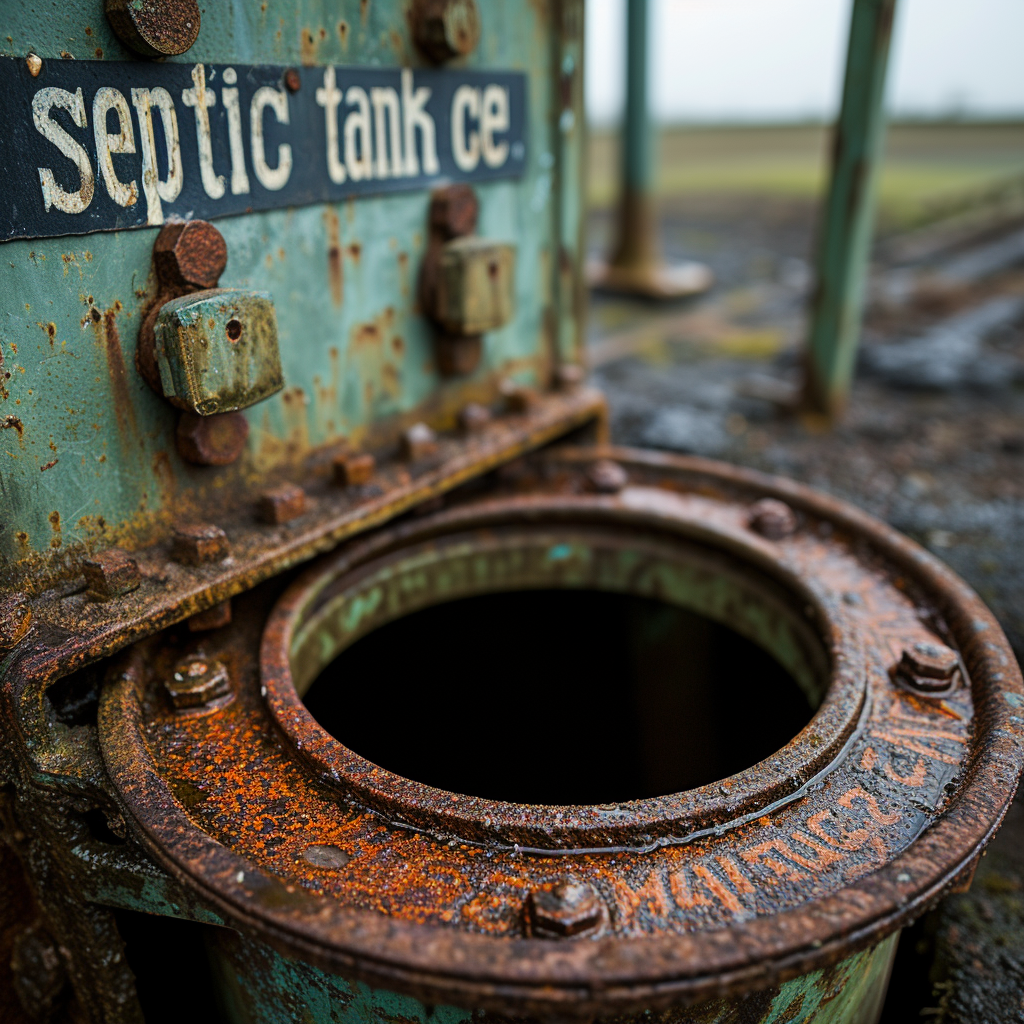
Let’s cut to the chase—overlooking the indications of a septic tank bursting at the seams can lead to real headaches and hefty expenses down the road. Let us delve into what exactly might unfold if warnings are tossed aside.
Home Plumbing Havoc and Potential Destruction
Think about it—a full septic tank can backfire, literally. Wastewater has nowhere to go but back where it came from, wreaking havoc upon your home plumbing. Toilets and sinks become fountains of waste, and let’s not even talk about the cleanup… it’s not pretty!
The Eco Threat
There’s also the bigger picture to consider. A neglected tank doesn’t just foul up your property; it’s an environmental faux pas. Contaminants like nitrates could leach into groundwater—an absolute no-no for local ecosystems and our health.
Climbing Maintenance Costs and Risk of Fines
Let’s be real for a second—skipping regular septic maintenance is akin to throwing money down the drain. Eventually, emergency repairs can leave you broke as they’ll cost some times thousands! Plus, there might be legal penalties for flouting sanitation codes we all gotta abide by.
In short, folks should take those subtle (and not-so-subtle) nudges from their septic system seriously. It’s cheaper; it’s easier on Mother Earth, and yeah, it sure beats dealing with a domestic disaster zone later on!
Getting Professional Septic Inspection and Upkeep
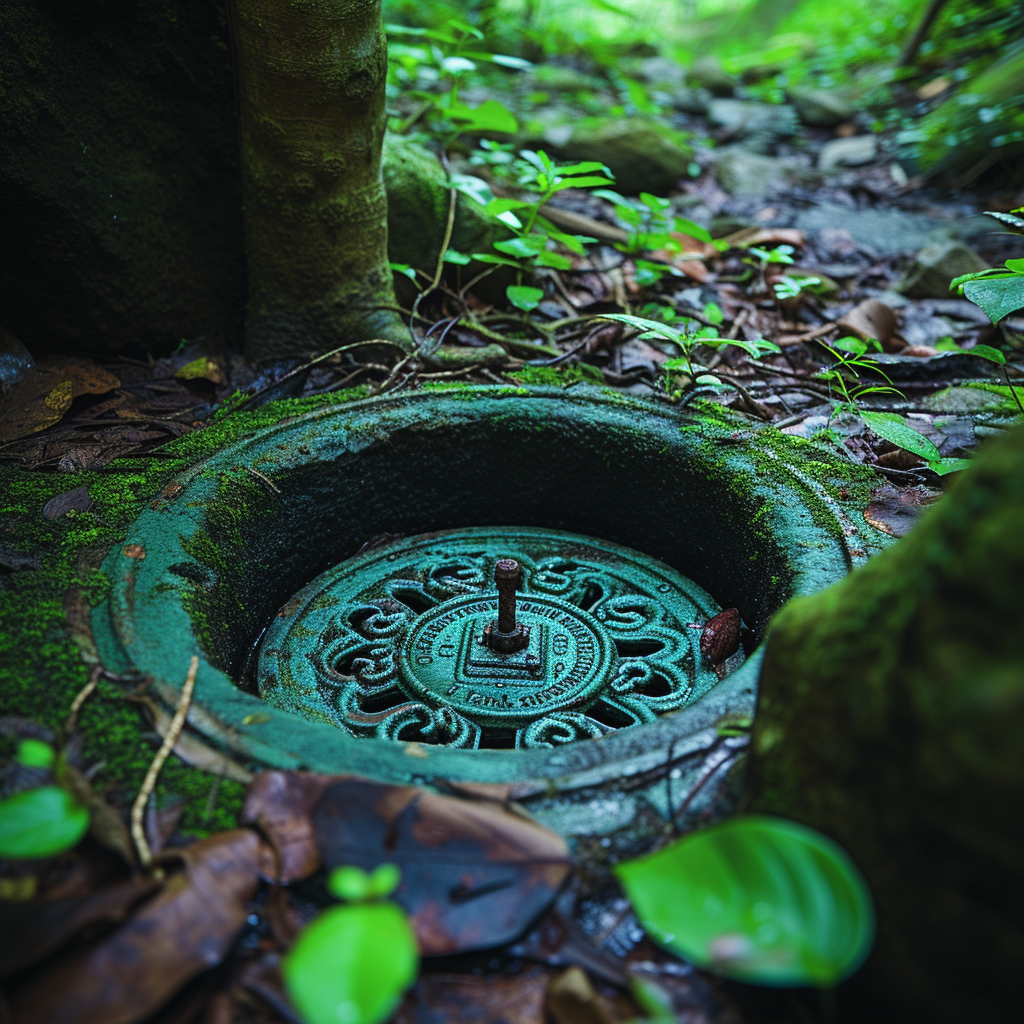
Now, let’s talk shop about getting pros on the job. No DIY guide can substitute for the trained eyes of a certified septic technician.
Hiring Qualified Septic Pros
To keep your system humming along nicely without any hiccups, it’s key to enlist septic service experts who know their stuff. They’ve got the smarts, the tools, and let’s face it—doing it yourself ain’t everyone’s cup of tea.
How Often Should You Book a Pro?
Mark your calendar because this isn’t something to put off till the cows come home. Ideally, you’d want to sign up for professional inspections every 1-3 years. The exact interval might vary depending on your system size and household habits.
Making Sense of Inspection Reports And Service Suggestions
An inspection report might as well be written in hieroglyphics if you don’t know what to make of it. It’ll detail all sorts of findings from scum and sludge layers to potential leaks and pipe clogs. When you get advice from your trusty service pro, it’s not just hot air—they’re telling you what needs fixing pronto, and what can wait a little while longer.
Remember, steering clear from plumbing disasters starts with staying informed and engaging professionals when needed. Even if watching grass grow sounds more exciting than septic maintenance, this bit of know-how just might keep things flowing smoothly at home.
Proactive Measures to Ward Off Septic Troubles
To keep septic woes at bay, there’s more we can do than you might think. By embracing smart water use and being picky about what goes down the drains, we can stave off potential concerns.
Water Wisdom: Conserving H2O
Let’s talk about slashing your household’s water consumption – a move that’ll give your septic system a much-needed breather between services. Mull over installing high-efficiency fixtures and appliances and repair leaks without delay. Also, space out laundry days and moderate your shower time. These tweaks can make a world of difference and help prolong those intervals between pumping your tank.
The Low-Down on Disposal Do’s and Don’ts
Now, let’s get down to brass tacks with dumping habits that can play a pivotal role in preserving the vitality of your septic architecture. Start by saying no-no to flushing anything apart from human waste and toilet paper – yep, this rule is ironclad! Also, keep food scraps, grease, harmful chemicals, and non-biodegradable items out of your pipes. Believe it or not, these simple habits will keep things running smoothly downstream.
While some products tout their ability to boost bacteria levels or dissolve solids quickly, they should be approached with caution. Overuse or misuse might just cause more harm than good – perturbing the delicate ecosystem within your tank or even damaging components. So let’s agree: When in doubt, it’s usually best to stick with good ol’ fashioned water conservation tactics and proper waste practices first.
Frequently Asked Questions (FAQ)
What's one warning that your drain field is in jeopardy?
A key indicator of a compromised drain field is soggy soil or standing water in the area, suggesting an effluent overflow caused by either septic tank issues or leach field failures.
As a homeowner, how can you determine if the chemicals you use affect your septic system?
Septic system owners need to know that some household chemicals can disrupt the bacteria balance within the tank. It’s best to consult with service members such as Mr. Rooter Plumbing for personalized advice on safe products.
Could shifting soil or landscape changes impact my septic tank drainage?
Absolutely, changes in landscape or soil conditions can alter your septic system’s efficiency. For instance, adjustments might be necessary for the installation of structures like propane tanks, which should be done considering existing septic components.
What are the advantages of opting for a drip distribution system for a septic tank owner?
Drip distribution systems can provide more even wastewater disposal and are a good option for properties with limited space or adverse soil conditions, as they can function effectively in varying weather and environmental conditions.
Why would I consider using trench systems over a traditional bed drain field?
Trenches may afford better effluent filtration and less surface disruption, especially beneficial for landowners seeking to preserve the natural landscape while maintaining efficient sewage treatment.
How does Samantha from Greater Syracuse ensure her high-end septic system doesn't face failures due to poor maintenance?
‘Samantha makes sure to keep up with regular septic system evaluations, servicing her system through professionals like The Original Plumber & Septic to prevent any costly breakdowns down the line.’
If I'm considering Septic Tank Installation near a wooded region of my property, what factors should I ponder?
‘When it comes homeowners installing their SEPTIC TANK near wooded regions, it’s critical they consider root intrusion and ensure proper distance from trees to avoid future complications with sewage lines and outlet pipes.’
'Emily has sent out several emails without getting answers. What steps should she take next regarding her weeping bed not functioning properly?'
‘After several unresponded emails, Emily should step up direct communication by calling providers like Forbes Home Improvement Plumbing. Using calls instead of waiting on emails guarantees quicker resolution to her problem.’
'We've had our septic tank for quite some time now. Are there lifespan considerations we NEEDS EMPTYING into account?'
‘Certainly. Factors like maintenance frequency, usage levels, environment, and sewer line plumbing quality could affect your septic tank system’s longevity. Regular care and checks can extend its lifetime significantly.’
'Can extreme weather conditions precipitate a faster rate of septic system failure?'
‘Yes indeed. Severe weather conditions can stress your leaching fields and overall septic infrastructure. Taking protective measures during extreme weather seasons is essential for prolonging its functionality.’

I’m Tim Robberts, a seasoned wastewater treatment & septic system expert with over 40 years of experience in the field. My career began as a septic tank installer, and I quickly gained a reputation for my attention to detail and commitment to excellence. Over the years, I’ve honed my skills in designing, installing, and maintaining septic systems for residential and commercial properties.
